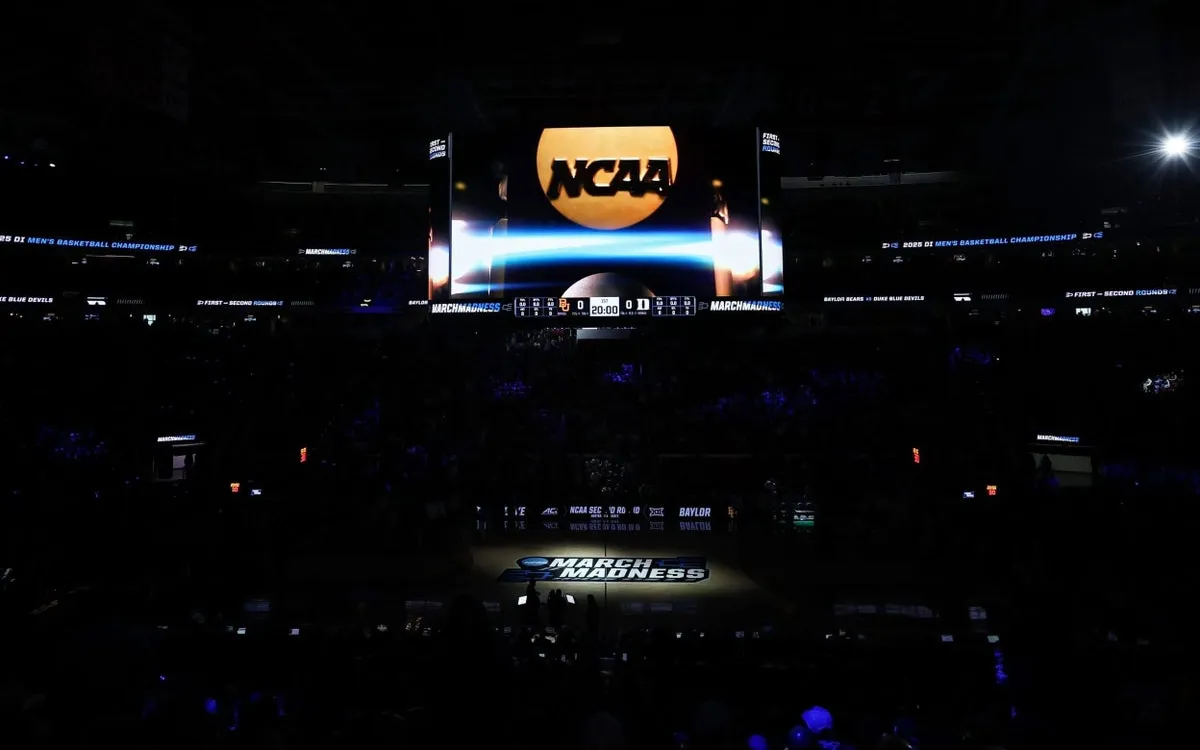
A federal judge has officially granted final approval for the House v. NCAA settlement, marking a historic milestone in college sports. This groundbreaking agreement allows universities to directly compensate college athletes, fundamentally changing the landscape of college athletics in the United States. The settlement resolves multiple antitrust cases against the NCAA and its leading conferences, paving the way for a new revenue-sharing model.
The approved settlement introduces a 10-year revenue-sharing framework, enabling athletic departments to distribute approximately $20.5 million in name, image, and likeness (NIL) revenue to college athletes starting in the 2025-26 season. Previously, college athletes could only earn NIL compensation through external parties, including donor collectives closely associated with their respective schools. This shift allows for a more direct and equitable financial relationship between universities and athletes.
As part of the settlement, the NCAA and its power conferences—ACC, Big 12, Big Ten, Pac-12, and SEC—have agreed to pay nearly $2.8 billion in damages to Division I athletes who were previously restricted from signing NIL deals since 2016. This compensation will be distributed over the next ten years, with a significant portion expected to benefit former players from power-conference football and men’s basketball programs.
Colleges will be permitted to start directly sharing revenue with college athletes beginning July 1. Judge Claudia Wilken of the Northern District of California, known for her previous rulings against the NCAA in landmark cases such as O’Bannon and Alston, approved the settlement approximately a year after the terms were first agreed upon. This decision followed a final approval hearing on April 7, where she listened to concerns from over a dozen objectors.
Despite the overwhelming support for the settlement, some objectors raised issues regarding new roster limits that replace traditional sport-by-sport scholarship caps. These limits restrict the maximum roster size per team while ensuring that each roster spot receives a scholarship. While schools can distribute scholarship funds at their discretion, concerns arose as many institutions preemptively reduced roster spots for walk-on athletes, particularly in football, and partial scholarship players in non-revenue sports.
In response to these concerns, Judge Wilken issued an ultimatum in late April, demanding a revision of the settlement terms to protect athletes from losing roster spots. Settlement lawyers subsequently proposed amendments allowing for voluntary "grandfathering" status for athletes who lost spots due to the new limits, ensuring they retain eligibility regardless of their school affiliation.
The initial House v. NCAA case was filed in June 2020 by plaintiffs Grant House, a former swimmer at Arizona State, and Sedona Prince, a former player for the Oregon women's basketball team. The lawsuit challenged existing NCAA policies that restricted athletes from receiving compensation for the commercial use of their NIL rights, as well as sharing in the revenue from NCAA and conference television contracts. This case was later consolidated with two similar lawsuits, including Carter v. NCAA and Hubbard v. NCAA.
Fearing a potentially unfavorable ruling that could result in significantly higher damages, the NCAA and Power 5 conferences agreed to a settlement in May 2024. Wilken granted preliminary approval in October 2024, setting the stage for the landmark changes now being implemented.
The NCAA's traditional model of amateurism, which restricted athletes to receiving only scholarship benefits, began to unravel in 2014 following a ruling against the NCAA in the O’Bannon case. This led to schools offering cost-of-attendance stipends, which marked the beginning of a series of legal challenges that continue to impact NCAA policies. The subsequent Alston v. NCAA case, which reached the Supreme Court, allowed schools to provide athletes up to $5,980 per year for academic expenses and highlighted the NCAA's vulnerability to further legal scrutiny.
Since the Supreme Court's ruling, NIL compensation has exploded, with many athletes securing lucrative deals with both local businesses and national brands, such as Gatorade and New Balance. However, concerns have emerged regarding the use of NIL agreements as a means for recruiting inducements. In response, the NCAA's enforcement division initially sought to penalize schools for using NIL for “pay for play” practices, but legal challenges have hindered these efforts.
The financial landscape of NIL has changed dramatically, with reports indicating that some college football programs are generating upwards of $20 million in NIL revenue. As the House settlement takes effect, schools will have the authority to negotiate NIL deals directly, and all external NIL agreements exceeding $600 will be subject to a new clearinghouse to ensure compliance and fair market value.
The House v. NCAA settlement represents a pivotal shift in the world of college sports, setting the stage for future reforms and challenges. While this settlement significantly alters the financial landscape for college athletes, it does not mark the end of legal challenges facing the NCAA. Ongoing cases, such as Johnson v. NCAA, which seeks to classify athletes as employees entitled to minimum wage, demonstrate that the evolution of college athletics is far from over.
As stakeholders in the NCAA and power conferences navigate this new terrain, they continue to seek Congressional intervention to solidify the settlement's terms and protect the future of college sports.